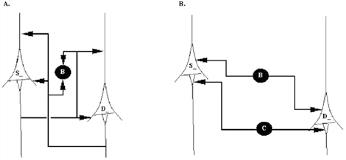SIMULATION OF NEOCORTICAL ACTIVITY
Abstract number :
2.061
Submission category :
Year :
2002
Submission ID :
94
Source :
www.aesnet.org
Presentation date :
12/7/2002 12:00:00 AM
Published date :
Dec 1, 2002, 06:00 AM
Authors :
Wim van Drongelen, Mark Hereld, Hyong C. Lee, Michael E. Papka, Rick L. Stevens. Department of Pediatrics, The University of Chicago, Chicago, IL; Mathematics and Computer Science Division, Argonne National Laboratory, Argonne, IL; Department of Computer
RATIONALE: Epilepsy in children often involves pathologic activity in the neocortex. Clinical recordings during seizures and interictal spikes show the overall electrical activity of the affected cortex, without revealing details of the underlying functions. One method of exploring these underlying mechanisms is to perform computer simulations of the activity of coupled neural elements.
Current studies focus on properties of individual elements or thalamo-cortical loops. Our objective is to use large-scale simulations of the microcircuitry of the neocortex to examine the role of different neural elements in the initiation and propagation of synchronized bursts as a model for epileptiform activity.
METHODS: A scalable network model was built on the GENESIS neural simulator (Bower and Beeman, 1998). The simulation software runs on the Chiba City cluster of Linux-based PC[ssquote]s at Argonne National Laboratory.
Our approach is based on the canonical circuit first proposed by Douglas and Martin (1990); a cortical unit consists of a superficial and deep pyramidal cell plus of inhibitory elements. The inhibitory cells in our model are:
- Basket cells that inhibit the pyramidal cell[ssquote]s soma and receives inputs from the pyramidal cells,
- Chandelier cells that inhibit the initial segment of the pyramidal cells. Although the input to these cells is unknown, in our model we follow the speculation that association fibers form these connections.
The local excitatory connections are summarized in Figure 1A, the inhibitory contacts in Figure 1B.
An EEG signal was calculated by using the procedure described by Wilson and Bower (1992).
RESULTS: Activity in the network was initiated by a current injection into one of the elements. The elicited activity patterns were studied in networks of different size and with a different ratio between excitation and inhibition. Individual neurons in the network responded with a regular firing pattern to a depolarizing current injection. Interestingly, the activity in the network as a whole displayed a bursting pattern. The frequency of the bursts decreased with increased inhibition and depended on network size.
CONCLUSIONS: Bursting behavior of a population of neurons without intrinsic bursting properties, is influenced by network parameters. Simulated neural activity of neocortical networks can therefore provide a useful tool for the exploration of neural network mechanisms of ictogenesis.
Bower JM and Beeman D. The book of genesis. New York, Springer-Verlag, 1998.
Douglas RJ and Martin KAC. Neocortex. In: Shepherd GM ed. The synaptic organization of the brain. New York, Oxford University Press, 1990.
Wilson HR and Bower JM. Cortical oscillations and temporal interactions in a computer simulation of piriform cortex. J. Neurophysiol. 1992; 67: 981-995.[figure1]
[Supported by: This work was supported in part by the Falk Grant, and in part by the Mathematical, Information and Computational Sciences Division subprogram of the Office of Advanced Scientific Computing Research, U.S. Department of Energy, under Contract W-31-109-ENG-38.]
